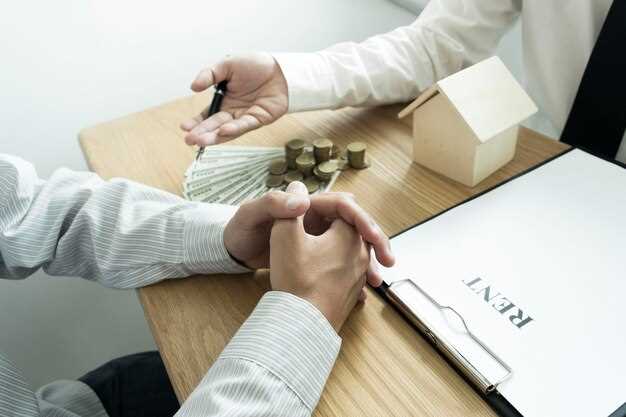
Participating in an auction can be an exhilarating experience, but understanding the bidding process and the associated costs is crucial for potential buyers. Auctions present unique opportunities to acquire valuable items, but they also come with various fees that can impact the final purchase price. This article aims to clarify these costs, highlighting the significance of both auction fees and buyer premiums.
When you engage in bidding at an auction, it’s essential to factor in not just the price you’re willing to pay for an item, but also the additional expenses that come into play. Each auction house typically implements its own fee structure, which can include a buyer’s premium–a percentage of the hammer price that is added to the final bill. Understanding how these costs work can ultimately influence your bidding strategy and help you make informed decisions throughout the auction process.
This comprehensive guide will break down the intricacies of auction fees and buyer premiums, ensuring that you are well-prepared for any auction event. By doing so, we will equip you with the knowledge needed to navigate the auction landscape effectively while maximizing your purchasing potential.
Understanding Auction House Fees and Their Impact on Final Costs

When participating in an auction, it is crucial to grasp the various fees imposed by the auction house, as these can significantly influence your overall costs. Auction houses typically charge a range of fees, including but not limited to buyer’s premiums, listing fees, and commission percentages. Understanding these charges is vital to making informed bidding decisions.
Buyer’s Premium is a standard fee added to the final bid amount that buyers must pay. This percentage, which can vary from one auction house to another, is calculated based on the final hammer price. For instance, if you bid $1,000 and the buyer’s premium is 10%, the total you will incur is $1,100. This fee often catches first-time bidders off guard, impacting their budget planning.
In addition to the buyer’s premium, listing fees may apply, particularly in online auctions, where sellers pay to have their items featured. While this fee is typically the seller’s responsibility, it can affect the overall pricing dynamics of the auction, thereby influencing bidding activity.
Moreover, auction houses may implement commission fees on sellers, which can indirectly impact buyers. If sellers incur high commission costs, they may adjust their reserve prices or start bids higher to compensate. This adjustment can alter the competitiveness of the bidding process, potentially deterring bidders from participating if prices seem inflated.
Understanding these fees helps bidders calculate their total costs accurately. Prior to engaging in any bidding, it’s advisable to read the auction house’s terms and conditions thoroughly. This knowledge ensures that bidders are fully aware of the financial implications and can strategize their bids effectively, maximizing their chances of winning while staying within budget.
Calculating Buyer Premiums: What Bidders Need to Know
When participating in an auction, understanding buyer premiums is essential for bidders aiming to navigate the process effectively. Buyer premiums represent an additional cost on top of the hammer price, which is the final bid amount accepted by the auctioneer. Here’s a breakdown of key points bidders should consider regarding buyer premiums.
- Definition: Buyer premium is a fee charged by the auction house and is usually a percentage of the final bid amount. This fee compensates the auction house for their services.
- Percentage Rates: Buyer premiums can vary widely. Common rates range from 5% to 25%, depending on the auction house and the type of auction. Always verify the specific percentage before bidding.
- Calculation Example:
- Suppose the final hammer price for an item is $1,000.
- If the buyer premium is set at 10%, the calculation will be: $1,000 x 0.10 = $100.
- The total cost incurred by the bidder will then be: $1,000 + $100 = $1,100.
- Additional Costs: Besides the buyer premium, bidders should also consider other costs like taxes, shipping, and handling fees, which can significantly affect total expenses.
- Bid Strategy: Understanding the total costs, including buyer premiums, allows bidders to formulate a strategic bidding approach. This knowledge helps in setting realistic price limits based on the total outlay.
- Transparency: Reputable auction houses will provide clear information about buyer premiums before the auction starts. Bidders should read these details to avoid unexpected expenses.
In summary, being aware of how buyer premiums are calculated and what additional costs may apply can significantly enhance a bidder’s auction experience. Knowledge of these factors enables participants to engage in the auction process with more clarity and confidence.
Step-by-Step Guide to the Bidding Process and Associated Costs

The bidding process at an auction involves several key steps that participants must follow to successfully place bids on items. Understanding these steps is crucial for both novice and experienced bidders alike.
First, familiarize yourself with the auction format and rules. Auctions may vary in structure, either being live in-person, online, or silent. Each format has its own specific bidding process, so it is important to review the auction house’s guidelines carefully before participating.
Next, register for the auction. This typically involves providing personal information and, in some cases, a credit card to secure your bids. Upon registration, you will often receive a paddock number or a bidding account, which you will use to place bids during the auction.
Once registered, you can view the items up for auction. Take the time to research and inspect these items. Many auctions provide catalogs or online listings with detailed descriptions and estimated values. Knowledge about the items will give you a competitive edge during the bidding process.
During the auction, the bidding itself begins. Be prepared to raise your paddle or click a button to place a bid. Monitor the auctioneer’s announcements closely, as they will guide the pace and increments of bidding. Bids can increase in set amounts, often based on the item’s value or the auction house’s guidelines.
As the bidding progresses, enthusiasm can lead to quick decisions, so maintain your budget and stick to your limits. Each bid you place may incur additional costs, such as auction fees and buyer premiums, which are typically a percentage of the final bid amount. Be aware of these costs beforehand to avoid surprises.
Once you are the highest bidder at the close of the auction, you will receive confirmation of your winning bid. It’s important to review the final price, including any applicable fees. Make prompt payment according to the auction house’s guidelines to secure your purchase.
Finally, arrange for item collection or shipping. Some auctions offer on-site pickup, while others may provide shipping services. Ensure you understand the logistics and any associated costs involved in receiving your won items.




